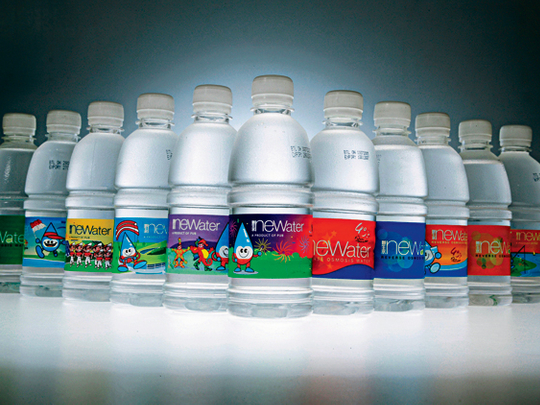
The irony of being surrounded by the sea with few natural aquifers and little groundwater might not have escaped Singaporean authorities when the island state got independence in 1965. Having to rely on water from neighbouring Malaysia to meet most of its requirements might have been a cause for concern for the powers that be.
From that vulnerable position, Singapore has grown into a model city for successful water management by putting in place a diversified and sustainable supply system. It still imports water from Malaysia under the two long-term agreements signed in the early 1960s — one of which expires at the end of August and the other in 2061. But over the years, in addition to expanding its water catchment areas with new reservoirs and canals, it has added two more sources — NEWater, a high-grade water produced from used water, and desalination.
Today, a large part of Singapore's daily demand of about 380 million gallons is met locally, says George Madhavan, Director, 3P Network Department, PUB, Singapore's national water agency. "[Now] NEWater and desalinated water can meet up to 30 per cent and 10 per cent of the demand respectively, and the rest [are] met by catchment and imported water."
Steps are under way to boost local sources to replace Malaysian water by 2061. "With the completion of the Punggol and Serangoon reservoirs by end of 2011, Singapore's water catchment will increase to two-thirds of its land area," says Madhavan. "By 2060, we plan to increase our desalination and NEWater capacities to be able to meet up to 30 per cent and 50 per cent of our water needs, respectively."
The island is now home to a vibrant industry of more than 70 companies. Exporting its expertise is the government agency International Enterprise (IE) Singapore. "[Singaporean water companies'] high-tech water treatment solutions cut across the entire water value chain, including industrial wastewater recycling capabilities, wastewater treatment and desalination," says Tham Poh Cheong, Group Director for Infrastructure, Environment and Engineering, IE Singapore. The numbers bear him out.
"Between 2006 and 2009, Singapore companies have secured more than 100 projects from over15 countries valued at S$7.73 billion (Dh22.9 billion)," says Madhavan. "The Mena secured the largest project values, almost S$6.4 billion worth, while the biggest number of projects secured, 43, valued at almost S$1 billion, were from China."
It's no surprise that the Mena region is adopting these technologies. From Algeria to Qatar and Oman and from Fujairah to Abu Dhabi, Singaporean companies have been contracted to set up plants in the Middle East. Boustead Salcon Water Solutions is constructing a plant for the treatment of treated sewage effluent (TSE) inAbu Dhabi for Dh55 million.
"The plant can recycle and recover 95 per cent of the TSE supplied, which will then be used as high-quality water for irrigation and landscaping," says Keith Chu, Vice-President — Corporate Marketing and Investor Relations, Boustead Singapore. Other companies in the region are Hyflux, which is building the world's largest membrane-based seawater desalination plant in Algeria for S$632 million, and SembCorp, witha S$1.4 billion plant integrated water andpower plant in Salalah.
With water now a key economic driver and expected to account for $1.7 billion (Dh6.24 billion) by 2015, Singaporean companies will continue to look for a bigger role worldwide.



